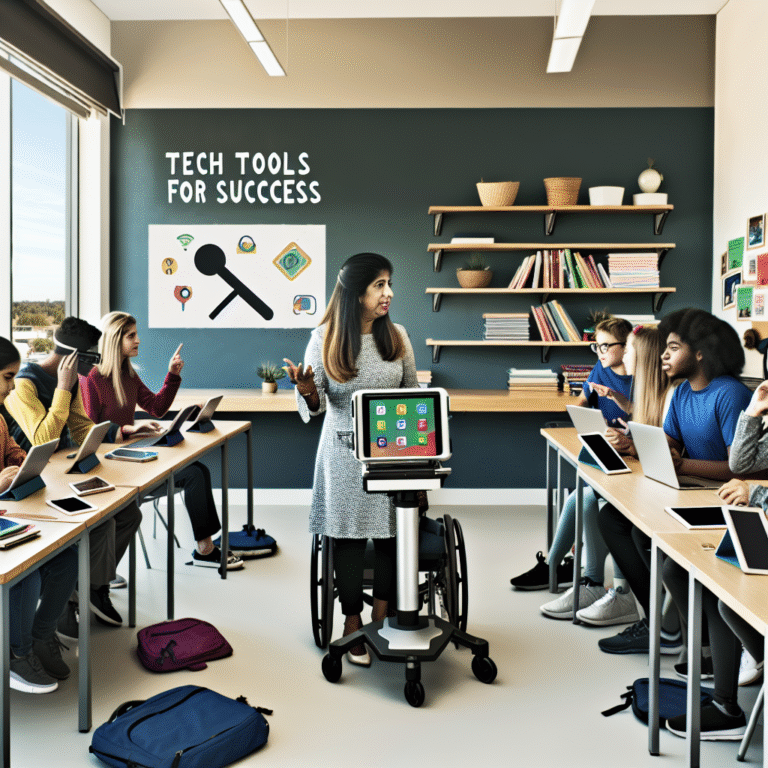
Introduction
Imagine a world where your brain functions more like a dynamic, ever-evolving landscape rather than a static structure. This is the realm of neuroplasticity, the brain’s astonishing ability to reshape itself in response to learning, experience, and environmental changes. The Brain That Adapts: Understanding Neuroplasticity and Its Impact on Learning is not just a fascinating concept reserved for neuroscientists; it’s an essential understanding for educators, students, and lifelong learners alike. With increasing evidence supporting the idea that our brains can adapt and optimize through various types of experiences, we find ourselves on the cusp of a new era in education and personal development.
In this article, we will explore the various facets of neuroplasticity, its implications for learning, and how individuals can leverage this incredible ability to enhance their cognitive capabilities. Prepare to be captivated by inspiring case studies, practical applications, and actionable insights that highlight the power of The Brain That Adapts: Understanding Neuroplasticity and Its Impact on Learning.
What is Neuroplasticity?
Definition and Explanation
Neuroplasticity refers to the brain’s ability to reorganize itself by forming new neural connections throughout life. Contrary to the long-held belief that the brain development ceases after a certain age, recent research indicates that our brains remain malleable, enabling us to learn new skills, adapt to conditions, and recover from injuries.
Types of Neuroplasticity
Functional Plasticity: This type refers to the brain’s capacity to move functions from damaged areas to undamaged areas. For instance, if someone suffers a stroke that impairs speech, other parts of the brain can potentially take over those functions.
- Structural Plasticity: This involves the brain’s ability to physically change its structure in response to learning. As we acquire new knowledge or skills, synapses are strengthened or weakened, thereby altering the connectivity between neurons.
Understanding these types of neuroplasticity not only helps us appreciate our brain’s capabilities but also underscores its potential for enhancing learning outcomes.
Why is Neuroplasticity Important for Learning?
The Science Behind Learning
Learning, a complex cognitive process, is fundamentally tied to neuroplasticity. When we learn something new, our brains undergo various changes:
Synaptic Strengthening: Learning reinforces synaptic connections. The more we practice, the stronger these connections become, making recall and execution more efficient.
Neuronal Growth: Engaging in complex tasks stimulates the growth of new neurons in areas associated with memory and learning, especially the hippocampus.
- Dendritic Growth: Learning can promote the growth of dendrites (the branches of neurons that receive signals), enhancing our brain’s information-processing capabilities.
These processes illustrate how The Brain That Adapts: Understanding Neuroplasticity and Its Impact on Learning is crucial for cognitive development, emphasizing the importance of continual engagement in learning activities.
Real-World Applications: Teaching and Learning
Case Study: The Mozart Effect
The Mozart Effect is a popular term describing how listening to classical music, particularly compositions by Mozart, is said to temporarily enhance cognitive performance. While some research debates its effectiveness, other studies have shown that engaging with music can lead to significant neuroplastic changes—especially in children. Music education, in particular, has been linked to improved spatial-temporal skills, which are vital for mathematics and problem-solving.
Analysis: This case illustrates how engaging in a specific learning task, such as music, can facilitate structural and functional changes in the brain, making it a compelling example of The Brain That Adapts: Understanding Neuroplasticity and Its Impact on Learning.
Case Study: Neurorehabilitation After Stroke
A study involving stroke patients highlighted that those who underwent intensive occupational therapy showed marked improvements in motor skills and cognitive function. The therapy was designed to encourage the use of the affected limbs and involved repetitive practice, allowing the brain to form new neural pathways.
Analysis: This underscores the practical implications of neuroplasticity in therapeutic settings, demonstrating that intentional, practice-oriented learning can lead to significant recovery and improvement, epitomizing The Brain That Adapts: Understanding Neuroplasticity and Its Impact on Learning.
Strategies to Harness Neuroplasticity for Enhanced Learning
To fully leverage the potential of neuroplasticity, it is essential to adopt effective learning strategies. Here are some potent strategies derived from research:
1. Embrace Lifelong Learning
The brain thrives on new challenges and new information. Make it a habit to step outside your comfort zone. This can range from learning a new language to picking up a musical instrument. The act of engaging with new information fosters synaptic growth and strengthens neural connections.
2. Regular Practice and Repetition
The brain solidifies and strengthens pathways through practice. Whether you are studying for an exam or learning to play an instrument, repeating tasks is vital. Consider using spaced repetition techniques that allow information to be revisited at intervals, enhancing retention.
3. Mindfulness and Meditation
Mindfulness practices have been shown to promote neuroplasticity. Studies indicate that regular meditation increases the thickness of the prefrontal cortex, enhancing executive function and emotional regulation. Practices such as mindfulness meditation can also improve attention and focusing skills.
4. Teach Others
One of the most effective ways to solidify information in your own mind is to teach it to someone else. This encourages you to organize knowledge clearly and adapt your explanation based on your listener’s understanding, promoting cognitive flexibility.
5. Utilize Multi-Sensory Learning
Engaging multiple senses enhances the learning experience and aids memory retention. Consider incorporating visuals, auditory cues, and even kinesthetic activities into your learning routine. This diversity stimulates various regions of the brain.
The Role of Environment in Neuroplasticity
Creating a Stimulating Learning Environment
The environment plays a crucial role in fostering neuroplasticity. A stimulating learning environment filled with challenges and opportunities can provoke curiosity and promote growth. This means incorporating elements such as:
Interactive Learning: Utilizing group projects, discussions, and hands-on activities encourages a deeper understanding of subjects.
Flexible Spaces: Ensuring that learning environments are adaptable can facilitate various teaching styles and learning preferences.
- Access to Resources: Providing access to diverse learning materials (books, online resources, and teaching aids) is crucial for multimedia learning.
Case Study: The Impacts of Classroom Design
A study conducted with elementary school students found that classrooms that incorporated natural light, greenery, and collaborative spaces led to improved focus, engagement, and academic performance. Students in these environments showed better mood and motivation, which positively influenced their learning.
Analysis: This case highlights that the physical layout and features of our learning environments are significant contributors to neuroplasticity, reflecting the essence of The Brain That Adapts: Understanding Neuroplasticity and Its Impact on Learning.
The Future of Neuroplasticity and Learning
Emerging Technologies
As we delve deeper into understanding neuroplasticity, new technologies are emerging that could enhance learning capabilities. Virtual reality (VR) and gamification are promising fields.
Virtual Reality: Immersive learning experiences through VR can offer unique opportunities for practice and engagement, promoting neuroplasticity.
- Neurofeedback: This technique involves using real-time displays of brain activity to train individuals to increase brain function in specific areas, potentially enhancing learning efficiency and retention.
Ethical Considerations
With emerging technologies come ethical questions. The manipulation of brain functions poses concerns. Striking a balance between enhancing learning through neuroplasticity and ensuring ethical standards must be a priority.
Conclusion
Within us lies a remarkable power—the power of an adaptable brain. The Brain That Adapts: Understanding Neuroplasticity and Its Impact on Learning serves as a guiding principle that transcends age, background, and previous experiences. By embracing neuroplasticity, we not only empower ourselves to pursue learning throughout our lives but also foster resilience and adaptability in the face of challenges.
As we continue to explore the fascinating world of neuroplasticity, let us take action. Whether you’re a student eager to absorb knowledge or an educator looking to inspire, remember that each new experience shapes the brain further, enhancing our capabilities. Nurture this ability, for it is the key to unlocking lifelong learning and personal growth.
FAQs
What is neuroplasticity?
Neuroplasticity is the brain’s ability to adapt and reorganize itself by forming new neural connections throughout life, particularly in response to learning and experiences.
How can I improve my brain’s neuroplasticity?
Engaging in lifelong learning activities, practicing regularly, and participating in mindfulness exercises are some of the most effective ways to enhance neuroplasticity.
Can neuroplasticity help recover from brain injuries?
Yes, neuroplasticity plays a crucial role in recovery from brain injuries. Therapies that promote functional use of affected areas can help re-establish tasks and enhance recovery.
Is there an age limit for neuroplasticity?
No, neuroplasticity occurs throughout life. While the brain is most adaptable during childhood, adults can still develop new skills and recover from injuries through neuroplasticity.
How does environment affect neuroplasticity?
A stimulating and supportive environment encourages the brain to adapt and grow. Ensuring access to enriching experiences and learning resources can significantly enhance neuroplasticity.
By understanding The Brain That Adapts: Understanding Neuroplasticity and Its Impact on Learning, we can embrace our capacity for change and growth, ultimately optimizing our learning experiences.












